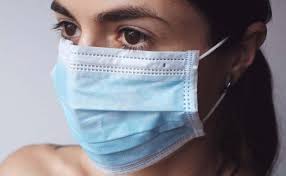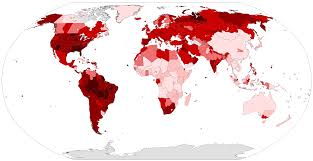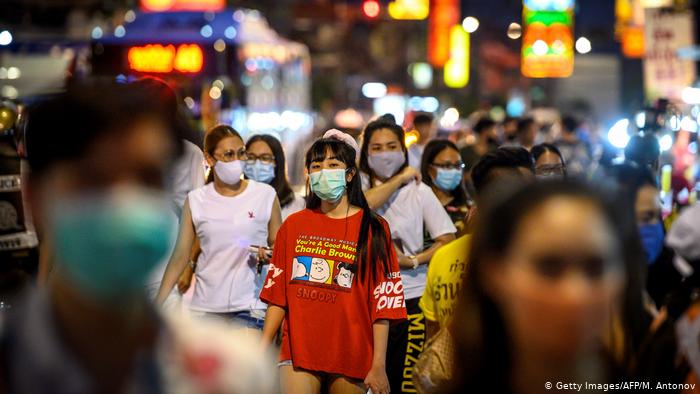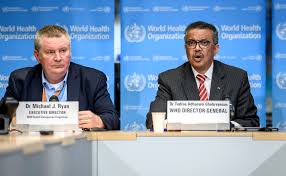Coronavirus Will Exist Forever in Human World?

At present, most scientists agree that in order to limit the spread of SARS-CoV-2, we need to take strict control measures, including effective contact tracing, testing and isolation, as well as maintaining social distance, wearing masks, etc., and South Korea, China and New Zealand Other countries have successfully used this method to successfully suppress the spread and spread of the virus.
Some people even called for a method of zeroing COVID-19 patients to try to eliminate the virus, rather than curb its spread. New Zealand seems to have succeeded at this point, but after 100 days of no new cases, new cases of infection appeared. And from international travel and other unknown sources. Although the adoption of the above control measures can flatten the number of infected districts and counties, it does not seem feasible to achieve zero COVID-19 infection.
Can humans achieve zero COVID-19 infection? This may take a long time.

- Test Kit for Coronavirus: SARS-CoV-2 Nucleic Acid Detection Kit (Rapid PCR Fluorescence Method)
- Symptoms (COVID-19)
- LCD Display non-contact infrared thermometer For Body C/F Selection Surface Temperature
- SARS-Cov-2(COVID-19) IgM/IgG Antibody Test Kit (Colloidal Gold)
- How does ZeroVirus protect us from virus?
It may be possible for some island countries. Take New Zealand as an example, it must prevent the virus from re-importing. Of course, this may require long-term and strict travel restrictions, and very strict nucleic acid tests are performed on passengers before and after travel. Given that people’s interest in extending border closures is not great, and the control measures close to the community are not enough to eliminate the virus, it seems impossible to achieve zero infection at present, but it may be possible if we use different methods in the future .
The most effective way to suppress COVID-19 infection is to use the natural defense mechanism of the human body, that is, the immune system. Recovery from the virus infection process is usually related to the body’s immunity, so whether it can be protected after being infected with SARS-CoV-2 The body is not re-infected by the virus. Researchers are not clear at present, but there are few cases of re-infection. Most of the infected people will produce antibodies against SARS-CoV-2, and some asymptomatic infected people may not produce antibodies, but the infection will still activate the body’s immune system T cells, thus providing a substitute The defense mechanism, therefore, it seems that infection produces immunity in most people, at least in the short term.
Knowing this mechanism, some scientists have suggested that the virus should be allowed to spread in the population to allow the development of herd immunity, while protecting the elderly and susceptible people, so that immunity can be generated in a sufficient number of people. To stop the spread and spread of the disease, for a highly spreading virus like measles, the threshold for spreading is as high as 90%-95%. Some people think that for SARS-CoV-2, this threshold may be It will be as low as 50%, and the consensus of experts is about 60%-70%.

However, the current proportion of people who are infected with SARS-CoV-2 and recover has not reached this level, and the results of antibody studies also show that about 3% of people in Dublin have been infected with the virus, and the proportion may be even higher in New York City. That is 23%; but the higher infection rate in New York may lead to more deaths, even considering the larger population; however, Sweden has adopted a liberal policy in controlling the epidemic, which has led to more cases. , Its death toll per million population is ten times that of neighboring Finland and Norway. In these places, the impact of the second wave may be lower, because many people get infected per pound, but if the threshold of herd immunity is not reached, the entire population still seems unable to be protected, and attempts to reach this threshold through natural infection The consequence may be that more high-risk groups will die, including the elderly, obese patients, and patients with underlying diseases; in addition, some infected people will continue to develop long-term health complications, even if they The initial infection was not too serious.
Therefore, for most people, the risks associated with pursuing herd immunity make it an unacceptable strategy for suppressing the virus, let alone eliminating it. However, theoretically speaking, the realization of herd immunity through vaccination may allow us to reach the elusive zero infection situation. In many developed countries, vaccines have reduced the incidence of diseases such as diphtheria, tetanus, and measles to nearly zero. Degree. There are currently more than 200 SARS-CoV-2 vaccines under development, but if there is a vaccine that can completely eliminate COVID-19, the threshold may be a bit high. Any vaccine needs to prevent the disease and block the spread of the disease in the population. Aspect is very effective.
Can humans achieve zero COVID-19 infection? This may take a long time

However, the current fastest-developed vaccine has turned its attention to a lower goal: to achieve at least 50% effectiveness, which is also the threshold required to obtain FDA approval. Scientists have developed an efficient vaccine on the first attempt. It may be an optimistic idea, and the vaccine also needs to be effective for all age groups, and can be safely vaccinated for all people. Safety is the key, because any problems in any age group will cause them to Vaccine confidence and willingness to vaccinate. At the same time, it is necessary to produce enough vaccines to vaccinate more than 7 billion people around the world. This will take time; for example, AstraZeneca, which is developing a new crown vaccine, has now reached an agreement that it will produce 20% by the end of 2021. 100 million doses of vaccine. The impact of COVID-19 on humans may not be achieved overnight. The last case of natural smallpox occurred in 1977, 10 years have passed since the WHO launched the smallpox eradication program, and the development of the first smallpox vaccine has passed. It took nearly 200 years, and it took nearly 30 years from the initiative to eradicate polio to the eradication of polio in areas other than Pakistan and Afghanistan.
Therefore, although an effective vaccine can provide humans with the best chance of zero infection of COVID-19, we should still remain realistic about what may happen. Although it is not unimaginable to eliminate the virus in most parts of the world, It may take a long time.
You may like:
O Blood is Lucky for Coronavirus?
Low-Cost COVID-19 Test Kits May Save Much More Coronavirus Infections in Indian
The Failure of US Anti-Pandemic Might be the Failure of Country and Society System
Huge Impact to the United States for Inappropriate Anti-Pandemic
Can You Identify Conspiracy/Rumor Opinions In Coronavirus Pandemic?
